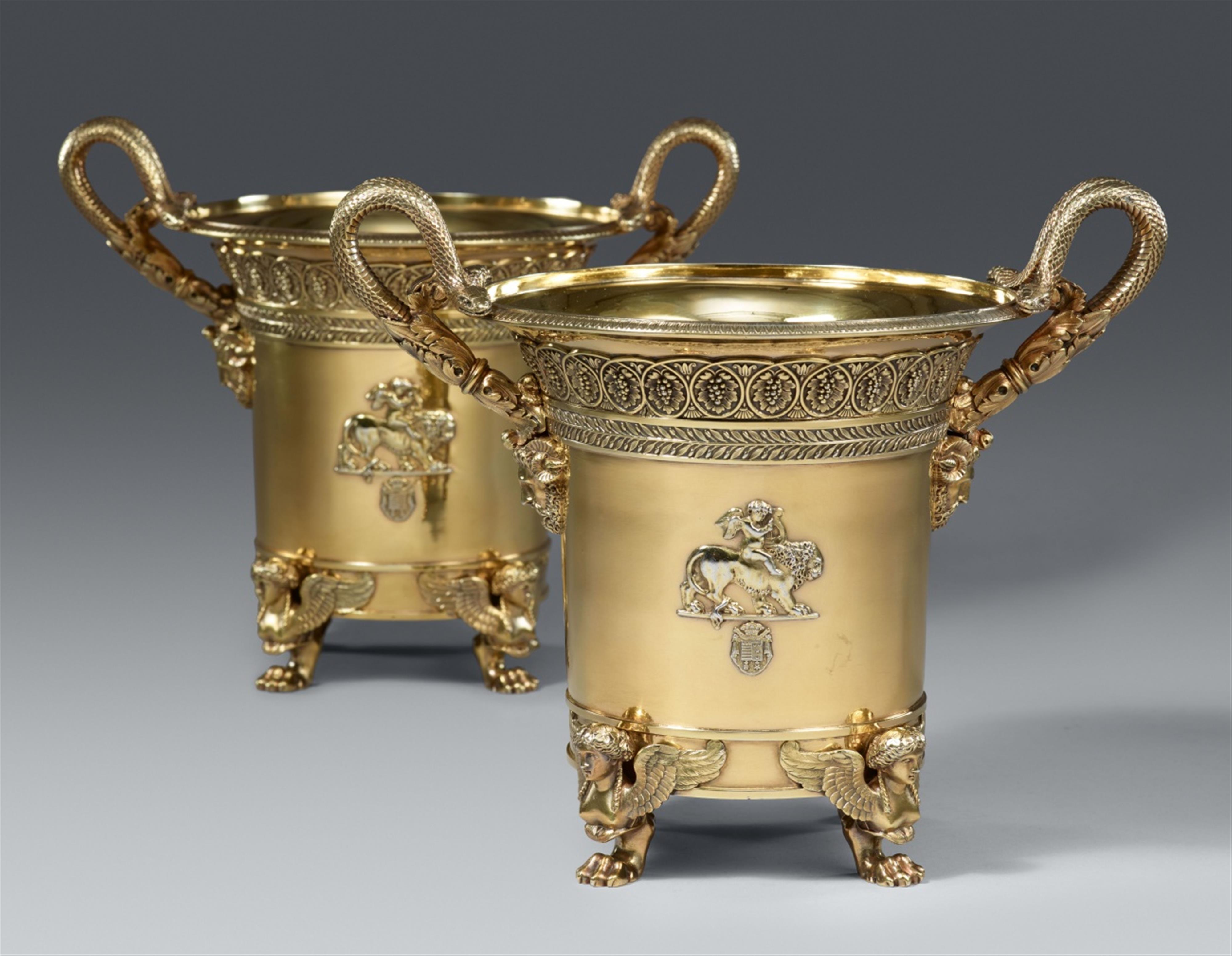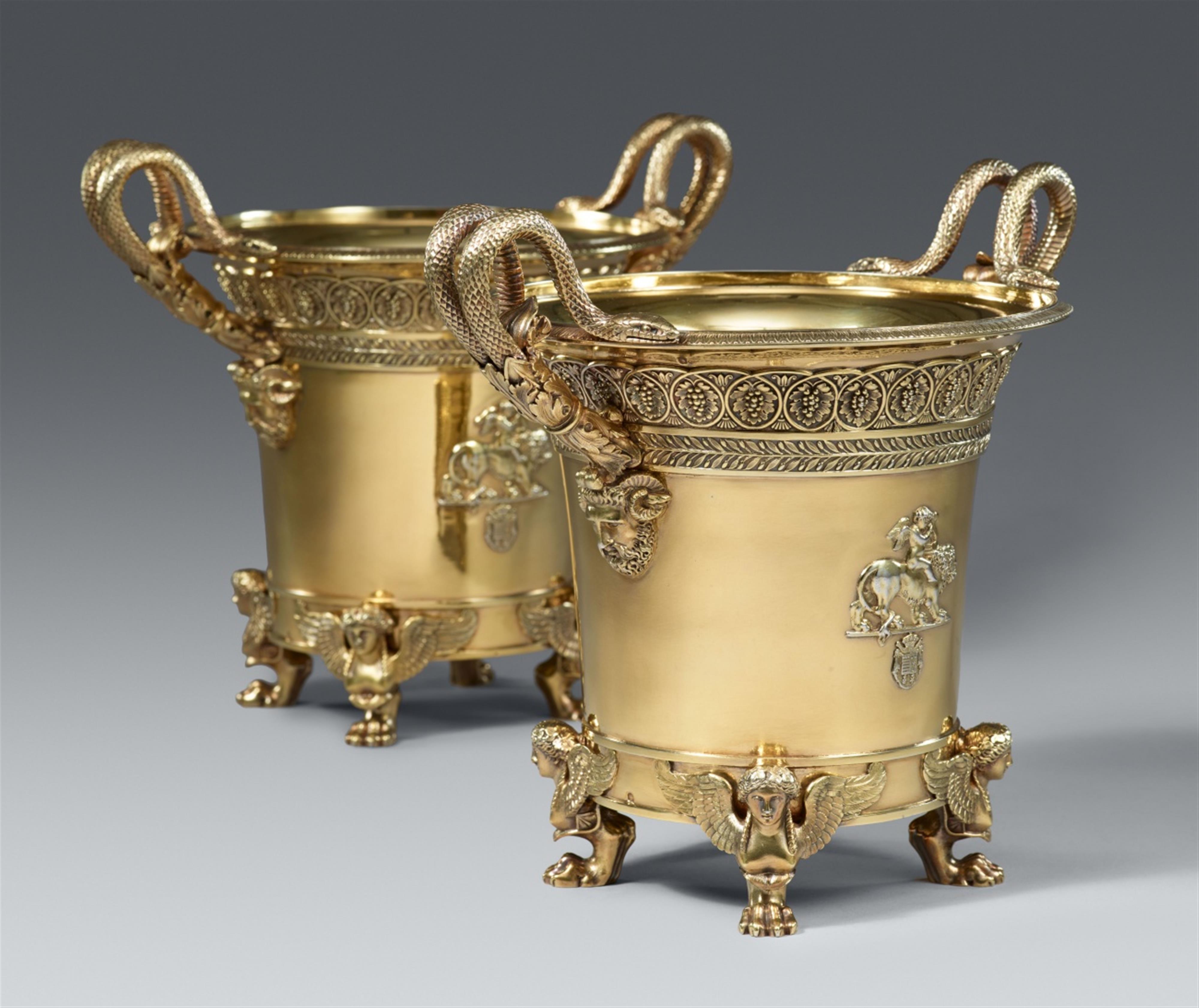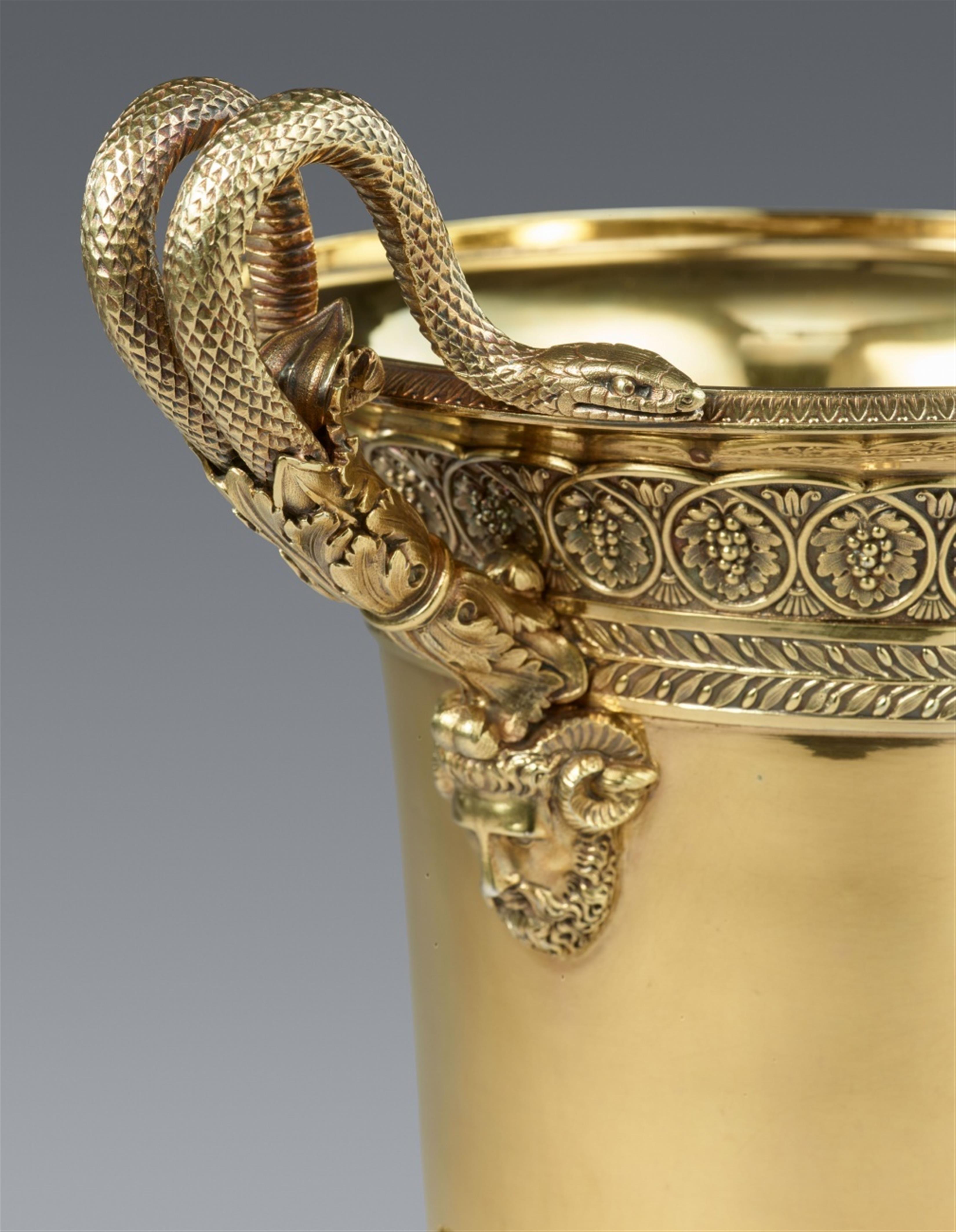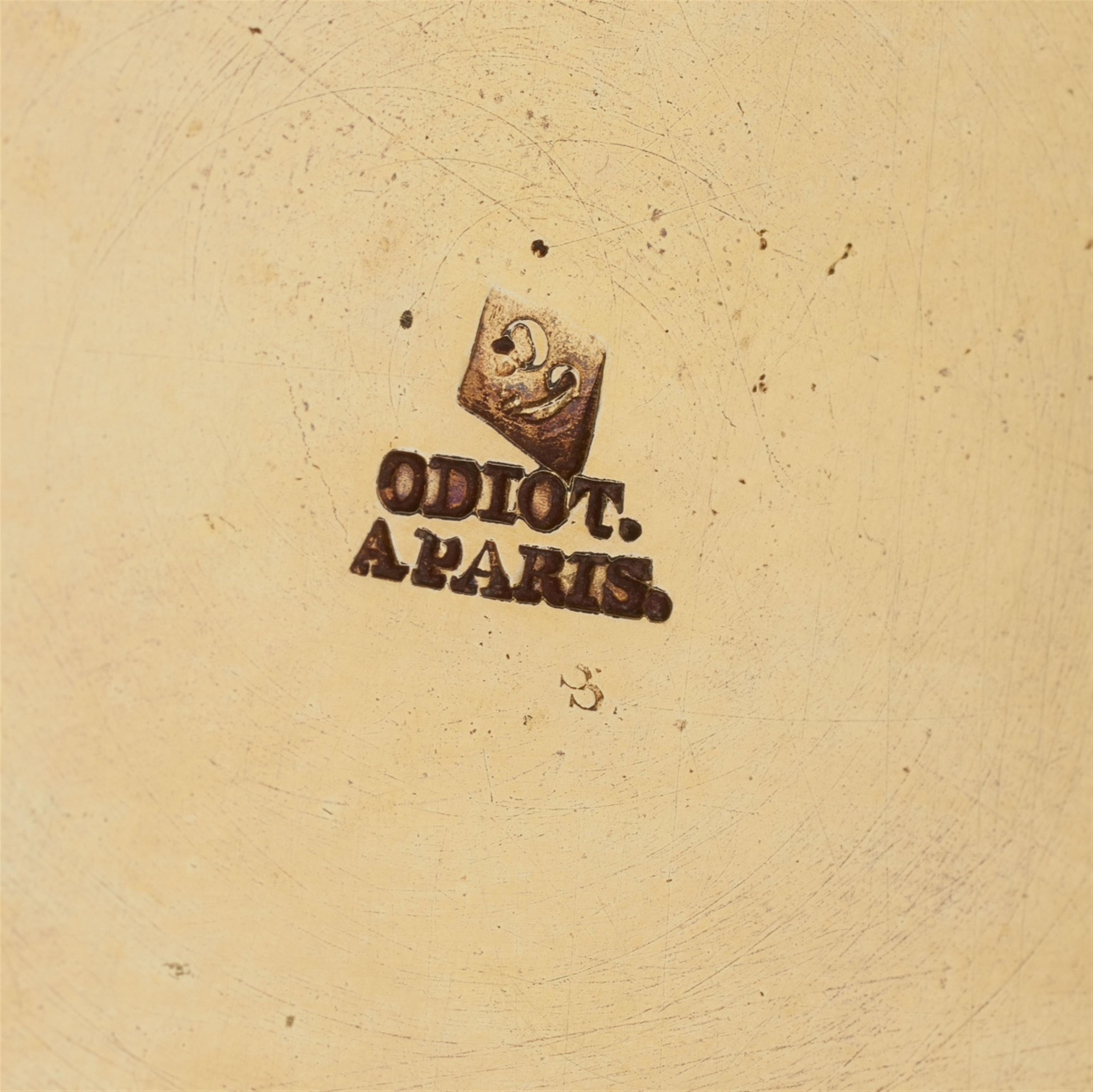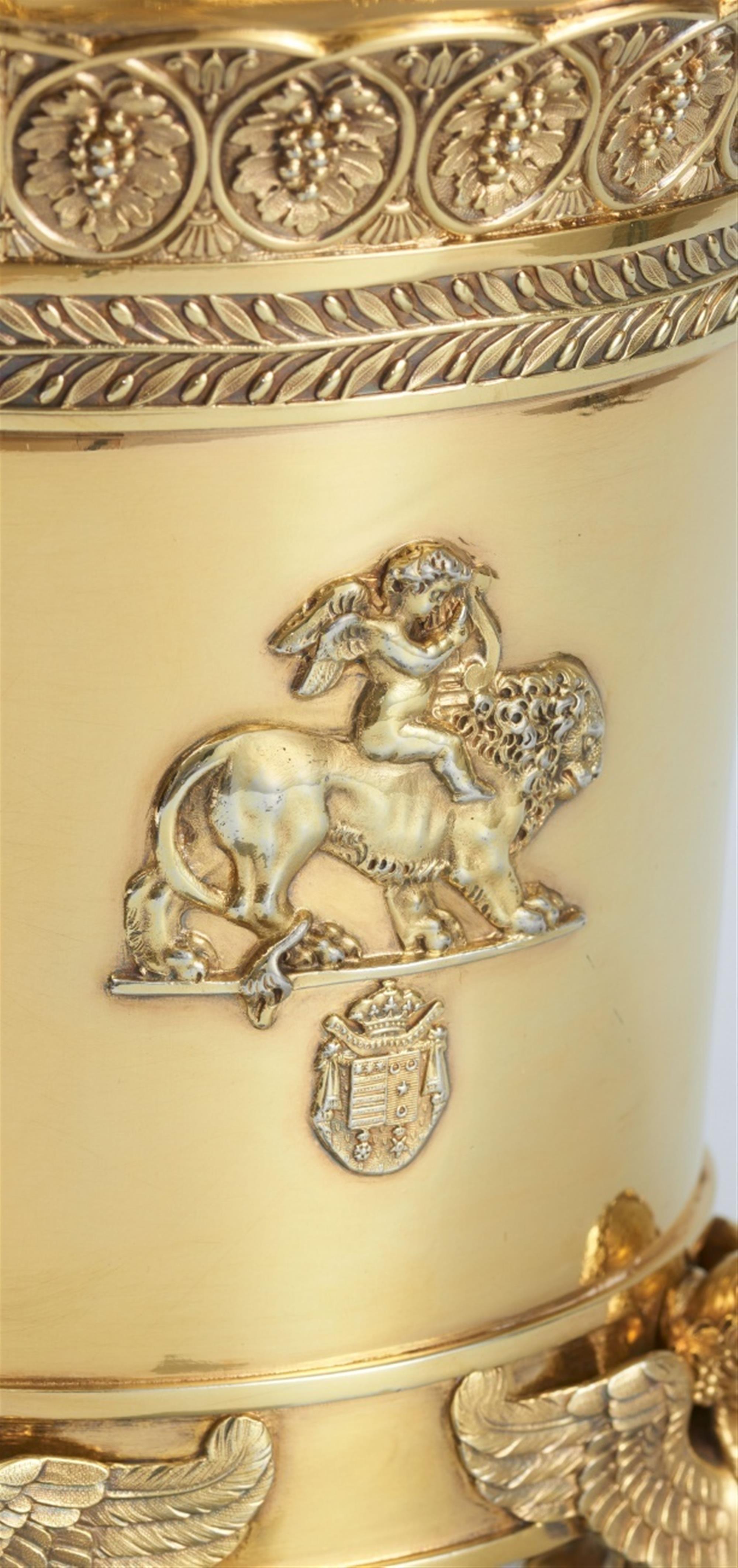A pair of silver gilt wine coolers made for the Marquis and Marquise d'Aligre
Round tapering vessels entwined with vine leaves on four finely chased sphinx supports. The handles designed as finely modelled snakes on faun demi-mascarons. The outer surface decorated with Neoclassical reliefs of a cherub playing a lyre and riding a lion and a maenad riding a panther on the other side. The lower section with the arms of alliance of the d'Aligre and Camus de Pontcarré families in relief. H 22 cm, weight 1,673 and 1,721 g.
Paris, marks of Charles-Nicolas Odiot, circa 1840.
Etienne-Jean-François-Charles d'Aligre (1770 - 1847) not only received the title of 6th Marquis d'Aligre after the death of his father in 1798, but also an enormous fortune with over 20,000 hectares of land near Bordeaux.
The Marquis married for a second time in 1810. His bride was Louise Charlotte Aglaé Camus de Pontcarré (1776-1843), a first cousin from a Burgundian family. The couple enjoyed a lively social life at the Château de Vaux, one of the most imposing and majestic French châteaux of the 19th century. Upon Napoleon I's accession to the throne in 1814, the Marquis assumed the post of chamberlain to his favourite sister, Princess Pauline Bonaparte, and was elevated to the rank of Pair de France in 1815.
The Marquis and Marquise, who had no children of their own, donated large portions of their wealth to causes such as the founding of charitable institutions and the construction of hospitals. The French state owes them in particular the Fondation d'Aligre in Chartres, founded in 1818, the Hôpital d'Aligre in Bonneval, and the Bourbon-Lancy hospital.
The Marquis' daughter from his first marriage, Etiennette d'Aligre, married the Marquis de Pomereu in 1810. Their children took the name Pomereu d'Aligre and inherited the title of Marquis d'Aligre in 1847.
Charles-Nicolas Odiot was one of the leading French silversmiths of his generation. The son and apprentice of Napoleonic silversmith Jean-Baptiste-Claude Odiot, he took charge of the extensive family workshops in 1827, after studying modern manufacturing techniques in London, and became court supplier to the royal family under Louis-Philippe I.

